The Restart of Nuclear Power Plants
Why is it necessary? How is safety assured?
(Provisional translation)
(English ver.) 2025-10-06
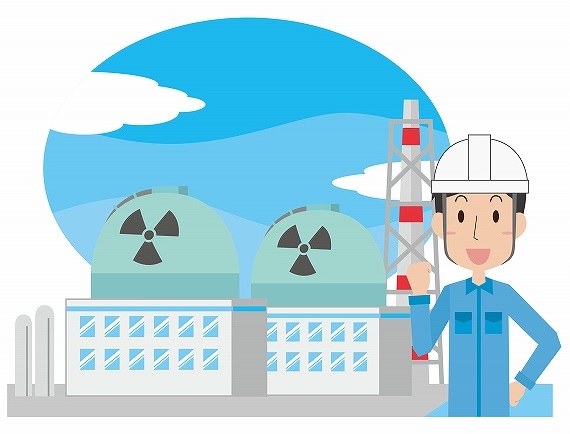
After the accident at TEPCO’s Fukushima Daiichi Nuclear Power Station (Fukushima Daiichi NPS) in 2011, all nuclear power plants in Japan suspended operation for safety measures to be taken. With the related rules reviewed since then, safety measures have been supplemented or reinforced accordingly. As a result, some nuclear power plants have restarted operation. This article updates the operational status of nuclear power plants in Japan along with the process toward restarting them.
The operational status of nuclear power plants and the process toward restarting them
The following map shows the status of nuclear power plants in Japan as of August 2025.
Status of nuclear power plants in Japan (as of August 5, 2025)
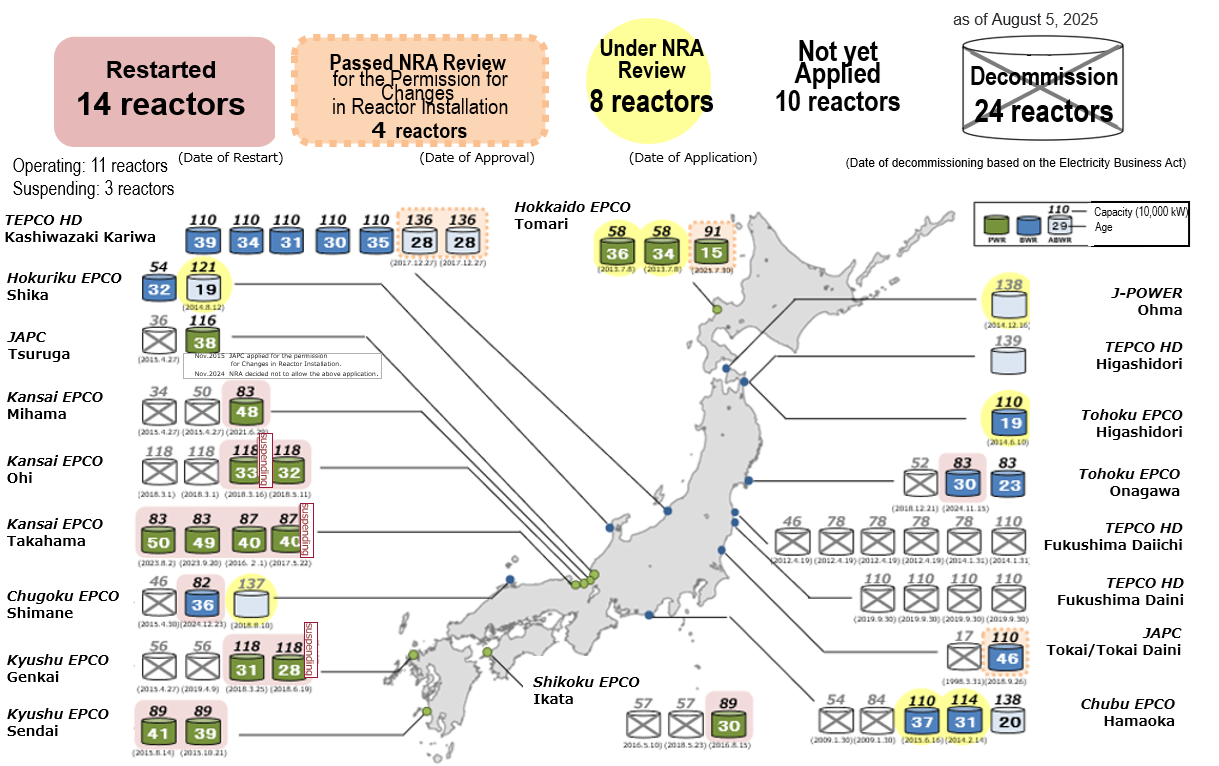
Following the taking of the relevant decisions, 14 reactors have been restarted. Other reactors are in one of the three categories indicated above, namely having been approved for changes in reactor installation, under assessment for new regulatory requirements, or not having applied for assessment. To understand the status of each reactor, the detailed process toward restarting them is outlined below.
The Nuclear Regulation Authority, an independent organization, examines their safety
Power utilities wishing to restart their nuclear power plants must apply for assessment and approval by the Nuclear Regulation Authority (NRA). There are some reactors that have not applied for assessment, and others under examination by the NRA regarding safety.
The Nuclear Regulation Authority was established in 2012 as an independent organization following the accident at the Fukushima Daiichi NPS in 2011. Until 2011, an organization to promote nuclear power generation and another organization to regulate it had both been under the jurisdiction of the Ministry of Economy, Trade and Industry. Based on the lessons learned from the accident at the NPS, these two organizations were separated, with the NRA newly established as an outside organization under the Ministry of the Environment. The NRA is composed of experts to make assessments and decisions on ensuring the safety of nuclear power plants based on scientific and technological information. It makes independent decisions regardless of government policies.
New regulatory requirements were established through an extensive review after the accident
The NRA makes assessments based on the new regulatory requirements it formulated in 2013 following the accident at the Fukushima Daiichi NPS, taking into account regulatory standards established by the International Atomic Energy Agency (IAEA) and other countries. In comparison with the old standards, a number of items were newly established or reinforced.
The new regulatory requirements for nuclear power generation
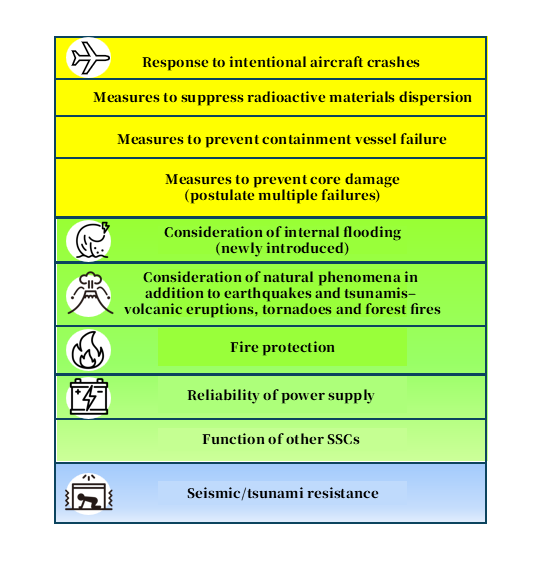
Comparison between Previous and New Regulatory Requirements
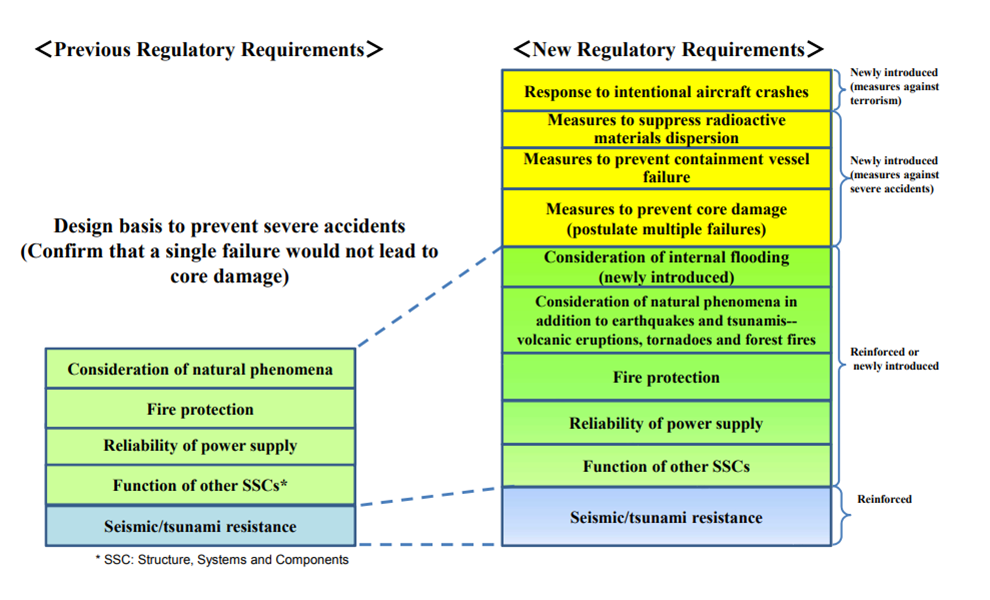
Note: A severe accident refers to a serious event beyond the design basis assumptions, causing critical damage to the reactor core due to the inability to cool it down and control it.
The accident at the Fukushima Daiichi NPS is regarded as a consequence of the inability to cool down the nuclear fuel due to the power sources being submerged. Therefore, the new regulatory requirements significantly enhanced measures against tsunamis and earthquakes, calling for the installation of facilities and equipment to provide them with power sources located in suitable locations. The new regulatory requirements also state that facilities be constructed with measures to prevent the escalation or spread of an accident. Preparations must also be made for other types of natural disasters in addition to earthquakes, such as volcanic eruptions, tornadoes and forest fires.
Furthermore, measures against acts of terrorism, such as intentional aircraft crashes, have been included. The new regulatory requirements state that safety measures be in place against such incidents.
Obtaining understanding from local communities is essential
A nuclear power plant will be granted approval for changes in reactor installation if it is considered to meet the new regulatory requirements through examination by the NRA. As of August 2025, the four nuclear power plants listed below have been granted approval for changes in reactor installation.
TEPCO’s Kashiwazaki-Kariwa Nuclear Power Plants No.6 and 7
JAPC’s Tokai No.2 Power Station
Hokkaido EPC’s Tomari Nuclear Power Plant No.3
However, even after approval is granted, those power plants cannot restart operation immediately. To address Japan's energy challenges, it is necessary to construct nuclear power plants with the cooperation of local municipalities. It is essential to obtain understanding from local communities before those power plants resume operation. The four power plants listed above are in the middle of the process toward obtaining local understanding through dialogue sessions with local people including those in the surrounding areas.
Is the restart of nuclear power plants necessary?
The first nuclear plant that restarted operation after 2011 was a pressurized water reactor (PWR) at Kyushu EPC’s Sendai Nuclear Power Station. Since then, power plants in the western part of Japan have restarted operation progressively.
In the eastern part of Japan, Tohoku EPC’s Onagawa No.2 Power Plant was the first nuclear power plant that restarted operation after the Great East Japan Earthquake . This plant was the first boiling water reactor(BWR) to restart operation.
Some argue against the necessity of the restart of nuclear power plants. To consider this argument, we must turn our eyes to Japan’s energy security issues.
Japan is a country that has limited energy resources, with an energy self-sufficiency ratio of 15.3% in 2023, which is low among developed nations. If a country depends on other nations for its energy requirements, changes in the international situation may jeopardize its stable supply of energy. For instance, Russia’s aggression against Ukraine caused disruptions in the international energy market, leading to high energy prices which impacted on countries including Japan. Energy security is a critical issue for Japan as it depends on the Middle East, a region with rising military tensions, for more than 90% of its crude oil requirements.
You can find more information in the following article.
The Increasing Importance of Energy Security in the Face of the Energy Crisis
On the other hand, achieving net zero is a global challenge. Japan upholds the policy of Green Transformation (GX) aiming to simultaneously achieve a stable supply of energy, economic growth, and decarbonization. To this end, securing decarbonized power sources is crucial.
The following article provides more information.
Japan’s energy policy toward achieving GX (Part 1)
Decarbonization will be advanced on the premise of securing a stable supply of energy
Given the diverse circumstances described above, it is important to achieve a well-balanced energy mix without over-relying on any specific energy source.
Nuclear energy is a decarbonized power source that can supply electricity stably and at low cost. It is an important option for Japan considering the expectations of greater domestic electricity demand in the future.
Is nuclear power generation really safe?
Argument often arises over whether nuclear power generation is truly safe. To sincerely address this issue, it is essential to maintain a continuous commitment to pursuing safety
One of the lessons learned from the accident at TEPCO’s nuclear power station is that we had fallen into a myth of safety, believing in the notion that accidents would never happen. This way of thinking ends the further pursuit of safety. But on the contrary, it is important to continue pursuing safety and make relentless efforts toward enhancing it. The government is firmly determined to ensure safety in a variety of ways.
The Nuclear Regulation Authority requires businesses to formulate emergency measures against accidents with a determination not to fall into the myth of safety again. The Regional Council for Nuclear Disaster Prevention has been established in 13 regions where nuclear power stations are located and the surrounding areas designated by the Cabinet Office. The Council compiles and confirms emergency responses including regional disaster prevention plans and evacuation plans formulated by the related municipalities. The Cabinet Office, and the related ministries and agencies, also participate in the council in addition to the related municipalities.
Furthermore, large-scale evacuation drills with the participation of local residents (the Comprehensive Nuclear Disaster Prevention Drills) are being conducted. In Kagoshima Prefecture, such a drill took place in 2024 with the participation of 294 organizations and about 4,820 residents. From the experience of the Noto Peninsula Earthquake in the same year, a scenario of how to evacuate from isolated areas was also included in the drill.
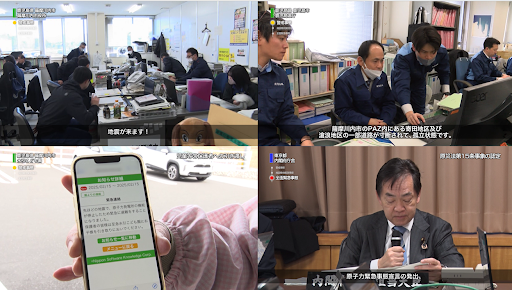
As described above, we are continuing to pursue safety for nuclear power with the accumulated knowledge from recent disasters. Interested parties, such as nuclear power businesses, the government, and related municipalities, will work together toward restarting nuclear power plants on the fundamental premise of ensuring safety.
Divisions in Charge
About this article
Office for Regional Relations for Nuclear Facilities, Electricity and Gas Industry Department, ANRE
About the Special Contents
Research and Public Relations Office, Commissioner’s Secretariat, ANRE
![]() The original Japanese text of this article; Click here
The original Japanese text of this article; Click here